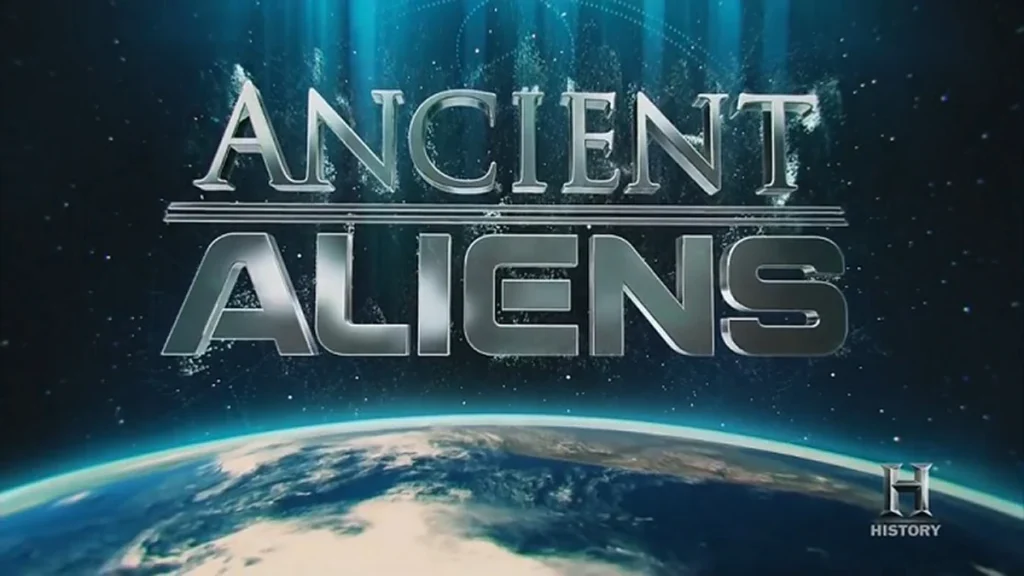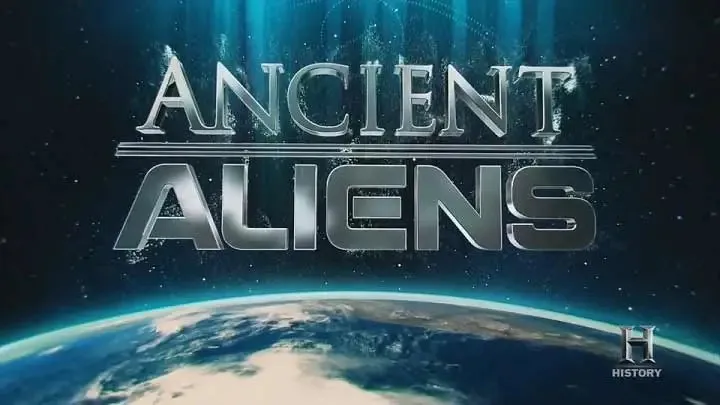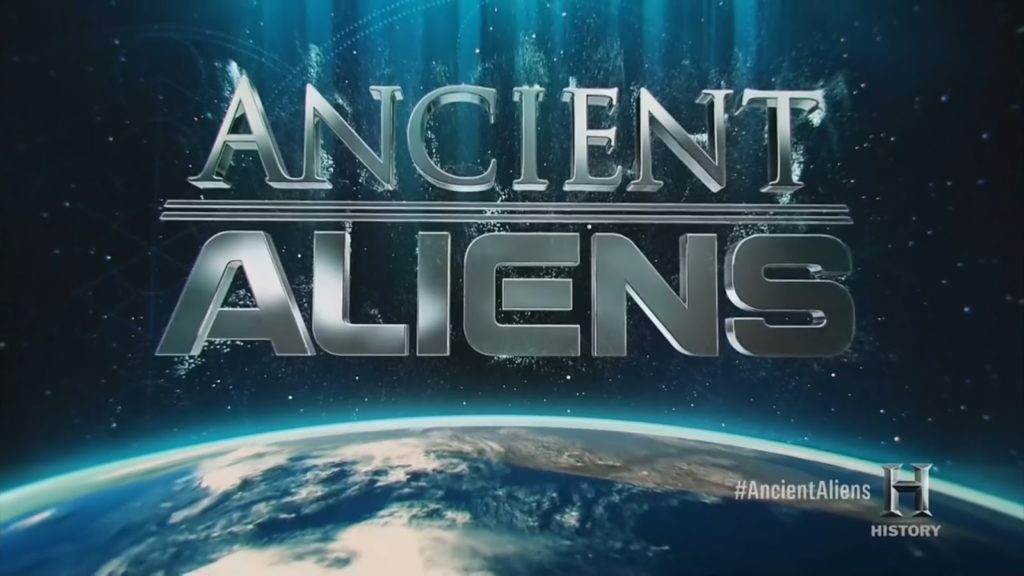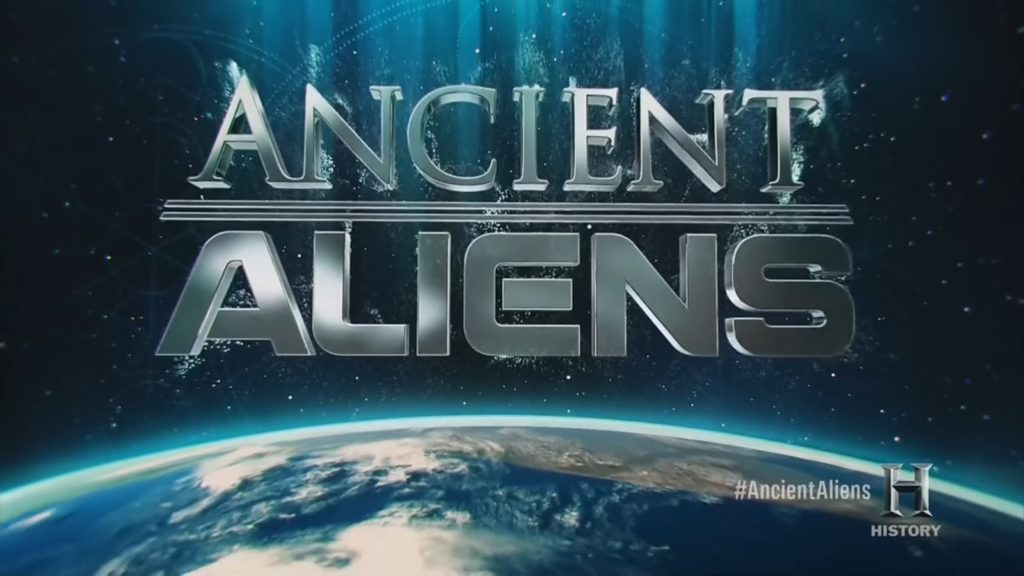Ancient Aliens – S20 E14 | The Search for Extraterrestrial Intelligence: Throughout millennia, humanity has been captivated by the possibility of connecting with extraterrestrial beings. As we progress through the 21st century, our pursuit to uncover intelligent life beyond our planet has intensified unprecedentedly. With the advent of advanced technologies, we are now equipped to scan billions of stars across the cosmos, potentially bringing us closer to an epoch-making encounter with alien civilizations.
This quest for extraterrestrial intelligence isn’t new. From the ancient Egyptians aligning their pyramids with stellar constellations to the medieval scholars pondering the stars for signs of life, the human race has long looked to the heavens for companionship. Modern efforts, however, are significantly more sophisticated. Organizations like SETI (Search for Extraterrestrial Intelligence) employ cutting-edge telescopes and data-processing technologies that dwarf the capabilities of past centuries.
These technological advancements have revolutionized our approach. Radio telescopes, for example, can now pick up the faintest signals emitted from the depths of space. Artificial intelligence algorithms sift through the cosmic noise, searching for patterns that might indicate a deliberate signal. Moreover, projects like the Breakthrough Listen initiative have expanded the search from radio waves to include laser emissions, broadening our net in the cosmic ocean.
In addition to technology, our understanding of where to look has evolved. Astronomers now prioritize planets located in the ‘habitable zone’ of their stars—regions where conditions might support liquid water and, conceivably, life. The discovery of numerous exoplanets, planets orbiting stars other than our sun, has invigorated this search. Each new planet discovered brings a fresh wave of excitement and possibility.
Yet, with all these advancements, the question remains—why have we not yet made contact? Some argue that the vast distances of space and the limitations of our current technology make such an encounter unlikely within our lifetime. Others suggest that intelligent life might use communication technologies far beyond our current understanding or prefer to remain silent.
The implications of making contact would be profound. Philosophically, the discovery of another intelligent race would challenge our understanding of our place in the universe. Socially and politically, it could unite or divide humanity in ways we can’t yet predict. Technologically, it might spur advancements as we attempt to understand and possibly interact with alien technologies.
Ancient Aliens – S20 E14 | The Search for Extraterrestrial Intelligence
As we continue this search, public interest and speculation also grow, reflected in popular culture and media. Television series like “Ancient Aliens,” particularly episodes such as “The Search for Extraterrestrial Intelligence,” illustrate our enduring fascination and speculative theories regarding ancient astronaut theories and potential government cover-ups.
Despite the unknowns, our search for extraterrestrial intelligence is more than a scientific endeavor; it’s a reflection of our innate curiosity and an eternal hope that we are not alone in the universe. Whether or not we make contact, this quest helps to define us, our aspirations, and our dreams of finding kinship among the stars.
As we stand on the brink of potentially discovering extraterrestrial life, we continue to look upwards and outwards with optimism. The next chapter in human history might just be written not on Earth, but in the stars. The journey continues, with each new technological advancement and each new discovery fueling the enduring quest to break the cosmic silence. Whether this will lead to a historic first contact or a sobering confirmation of our solitude in the cosmos remains to be seen. But one thing is clear: the search is far from over, and its implications are as vast as the universe itself.
The Quest for Extraterrestrial Life: Unveiling the Cosmos
Humanity’s Timeless Pursuit of Alien Contact
Since time immemorial, humans have gazed at the stars, wondering if we’re alone in the vast expanse of the universe. This cosmic curiosity isn’t just a modern phenomenon; it’s woven into the fabric of our history. Our ancestors, armed with nothing but their imagination and primitive tools, attempted to send messages to the heavens. They built colossal structures, aligned with celestial bodies, perhaps hoping to catch the eye of star-faring visitors.
Fast forward to today, and our methods have evolved, but the burning question remains: Are we alone? Modern scientists have traded stone monoliths for radio telescopes, scanning the skies for whispers of intelligent life. It’s as if we’re standing on a cosmic shoreline, sending bottles with messages into the stellar sea, hoping for a response from distant shores.
The James Webb Space Telescope: A New Era in the Search for Life
Enter the James Webb Space Telescope (JWST), humanity’s latest and greatest eye on the cosmos. Launched on Christmas Day 2021, this $10 billion marvel represents a quantum leap in our ability to peer into the depths of space. Unlike its predecessors, the JWST can peer through cosmic dust clouds, unveiling secrets long hidden from our view.
But what makes the JWST truly revolutionary is its ability to sniff out signs of life on distant worlds. Imagine being able to analyze the atmosphere of a planet trillions of miles away! The JWST can do just that, detecting chemical signatures that could indicate the presence of life. It’s like having a cosmic bloodhound, sniffing out the faintest traces of biological activity across the galaxy.
The Goldilocks Zone: Where Life Thrives
In our search for extraterrestrial neighbors, we’ve learned that not all cosmic real estate is created equal. Enter the Goldilocks Zone, a region around a star where conditions are just right for life as we know it – not too hot, not too cold, but just right. It’s the cosmic sweet spot where liquid water can exist on a planet’s surface, a key ingredient for life as we understand it.
Thanks to advanced telescopes and detection methods, we’re discovering more and more planets nestled in these habitable zones. Each discovery sends ripples of excitement through the scientific community. Could these distant worlds harbor life? Are they home to alien civilizations gazing back at us? The possibilities are as endless as the stars themselves.
As we continue to explore these cosmic oases, we’re rewriting our understanding of life’s potential in the universe. The discovery of hundreds, potentially thousands, of Earth-like twins scattered across the cosmos has transformed our perspective. We’ve gone from wondering if we’re alone to pondering how common life might be. It’s a paradigm shift that would have been unthinkable just a few decades ago.
Pioneering Technologies in the Search for Extraterrestrial Intelligence
SETI Institute: Listening for Cosmic Whispers
Imagine standing on a beach, straining to hear a whisper from across the ocean. That’s essentially what the SETI Institute does, but on a cosmic scale. Founded in 1984, this pioneering organization has been at the forefront of humanity’s quest to detect signals from alien civilizations.
The SETI Institute employs an array of massive radio telescopes, each one a technological marvel in its own right. These giant metal ears are constantly tuned to the stars, listening for any unusual patterns that might indicate an artificial origin. It’s like trying to pick out a single conversation in a bustling stadium, but instead of a stadium, we’re dealing with the entire universe.
While the task may seem daunting, the potential payoff is nothing short of revolutionary. A single confirmed signal from an extraterrestrial intelligence would forever change our understanding of our place in the cosmos. It’s this tantalizing possibility that drives SETI researchers to sift through mountains of data, day after day, year after year.
The Arecibo Message: Earth’s Cosmic Greeting Card
On November 16, 1974, humanity took a bold step in its quest for extraterrestrial contact. From the Arecibo Observatory in Puerto Rico, scientists beamed a powerful radio message into space. This wasn’t just any message – it was carefully crafted to convey information about our species and our planet to any intelligent beings who might intercept it.
The Arecibo message, as it came to be known, was a binary code containing basic information about human DNA, our solar system, and even a stick figure representation of a human. It was our cosmic “Hello!” to the universe, a bottle tossed into the stellar ocean. However, this act of interstellar outreach wasn’t without controversy.
Some scientists argued that actively broadcasting our presence might attract unwanted attention. It’s the cosmic equivalent of shouting in a dark forest – you might make contact, but with whom? This debate sparked the emergence of METI (Messaging Extraterrestrial Intelligence), a field that grapples with the ethical and practical implications of reaching out to potential alien civilizations.
Alien Megastructures: Searching for Advanced Civilizations
What if alien civilizations are so advanced that they’ve built structures visible from across the galaxy? This mind-bending concept is at the heart of the search for alien megastructures. Scientists are now scanning the stars for signs of colossal engineering projects that could only be the work of a highly advanced civilization.
One such theoretical structure is the Dyson Sphere, first proposed by physicist Freeman Dyson. Imagine a gigantic shell or swarm of satellites completely encompassing a star to harness its energy. It sounds like science fiction, but astronomers are seriously looking for signs of these cosmic constructs.
In 2015, the scientific community was buzzing with excitement over “Tabby’s Star.” This distant sun exhibited bizarre dimming patterns that some speculated could be evidence of an alien megastructure. While natural explanations have since been proposed, the incident highlighted how the hunt for advanced alien civilizations is pushing the boundaries of our astronomical observations.
As our technology improves, so does our ability to detect these potential cosmic wonders. Who knows? The next unusual stellar behavior we observe could be the key to unlocking the mystery of our cosmic neighbors. The search for alien megastructures reminds us that in our quest for extraterrestrial intelligence, we need to think big – really big.
Breakthroughs and Future Prospects in Extraterrestrial Research
The Galileo Project: A New Approach to Finding Alien Technology
Imagine turning the entire Earth into a cosmic detective agency. That’s essentially what Dr. Avi Loeb, a renowned Harvard astrophysicist, set out to do with the Galileo Project. Launched in 2021, this groundbreaking initiative takes a radically different approach to the search for extraterrestrial intelligence. Instead of looking outward, it focuses on finding evidence of alien technology right here on Earth.
The Galileo Project’s methodology is as innovative as it is audacious. By employing a network of sophisticated telescopes and sensors, the team aims to capture high-resolution images of unidentified aerial phenomena (UAP). But that’s not all. They’re also scouring the oceans and even meteorite impact sites for potential alien artifacts. It’s like turning our planet into one giant archaeological dig, with the possibility of uncovering evidence of extraterrestrial visitors.
In a stunning development, Dr. Loeb’s team made headlines in 2023 with an extraordinary find. During an expedition to the Pacific Ocean, they recovered mysterious spherules from the ocean floor. These tiny metallic orbs, no larger than a grain of sand, exhibited properties unlike any known terrestrial material. While further analysis is ongoing, the discovery has ignited speculation about potential alien visitation. It’s as if we’ve stumbled upon cosmic breadcrumbs, potentially leading us to a greater truth about our place in the universe.
Superhabitable Planets: Worlds More Suitable for Life Than Earth
What if Earth isn’t the gold standard for life in the universe? This mind-bending question has led scientists to explore the concept of superhabitable planets – worlds that might be even more conducive to life than our own blue marble. In 2020, a groundbreaking study identified 24 potential superhabitable planets, challenging our assumptions about what makes a world livable.
These cosmic oases boast characteristics that could make them veritable Edens for life. Picture planets slightly larger than Earth, with more land mass and shallower oceans, orbiting stars older and more stable than our sun. The extended lifespan of these stars could provide more time for complex life to evolve. Moreover, these worlds might have slightly warmer and more humid climates, creating a greenhouse effect that could support a greater diversity of life forms.
The implications of superhabitable planets are profound. If life is indeed more likely to thrive on these worlds, it could dramatically increase the odds of finding complex, perhaps even intelligent, life in the cosmos. It’s like discovering that the universe might be teeming with five-star hotels for life, while Earth is a modest bed and breakfast. This realization has energized the search for extraterrestrial life, prompting scientists to cast an even wider net in their cosmic hunt.
Artificial Intelligence: Accelerating the Search for Extraterrestrial Life
In the quest for extraterrestrial intelligence, we’ve enlisted a powerful ally: artificial intelligence. AI is revolutionizing the way we sift through the vast amounts of data collected by our telescopes and sensors. It’s like having a tireless, super-smart assistant that can spot patterns and anomalies that might slip past even the most attentive human observer.
One of the most exciting applications of AI in this field came in January 2023. Astronomers at the University of Toronto used machine learning algorithms to analyze 480 hours of data from 820 nearby stars. The result? Eight intriguing signals that could potentially be technosignatures – indicators of advanced alien technology. While these findings require further investigation, they demonstrate the immense potential of AI in accelerating our search for cosmic neighbors.
But AI’s role doesn’t stop at data analysis. It’s also helping us design more efficient search strategies and even predict where we might find signs of life. By simulating countless scenarios of planetary formation and evolution, AI can guide our telescopes towards the most promising targets. It’s as if we’ve upgraded from a flashlight to a high-powered searchlight in our exploration of the cosmic dark. As AI continues to evolve, it promises to be an invaluable tool in unraveling the mysteries of the universe and potentially answering the age-old question: Are we alone?
Conclusion: Ancient Aliens – S20 E14 | The Search for Extraterrestrial Intelligence
Preparing for a Paradigm Shift
As we stand on the precipice of potentially discovering extraterrestrial life, we must ask ourselves: Are we truly ready? The implications of such a discovery would be earth-shattering, reshaping our understanding of our place in the cosmos and fundamentally altering human society.
Imagine waking up to news headlines announcing the confirmation of alien life. How would this revelation impact our daily lives, our beliefs, our very sense of identity? The ripple effects would touch every aspect of human civilization, from religion and philosophy to science and technology. It’s a scenario that demands careful consideration and preparation.
To navigate this potential paradigm shift, we need more than just scientific readiness. We require societal preparedness as well. This means developing protocols for how to respond to first contact, considering the ethical implications of our interactions with alien life, and preparing the public for the possibility of such a monumental discovery. After all, the difference between a orderly response and chaos could hinge on how well we’ve prepared for this cosmic eventuality.
The Future of SETI and Space Exploration
As we peer into the future of our cosmic quest, the horizon brims with exciting possibilities. The search for extraterrestrial intelligence (SETI) is evolving at a breakneck pace, driven by technological advancements and a growing understanding of the cosmos.
In the coming years, we can expect to see a new generation of telescopes and sensors that will push the boundaries of our observational capabilities. These tools will allow us to probe deeper into space, examine exoplanets in unprecedented detail, and perhaps even detect signs of alien civilizations. It’s as if we’re upgrading from a magnifying glass to a high-powered microscope in our examination of the cosmic landscape.
Moreover, the future of SETI and space exploration will likely be characterized by increased international cooperation. The search for extraterrestrial life is a global endeavor that transcends national boundaries. As such, we’re seeing more collaborative efforts between countries, pooling resources and expertise to tackle this grand challenge. This united front not only accelerates our progress but also fosters a sense of shared human destiny.
Artificial intelligence will continue to play a pivotal role, sifting through vast amounts of data and identifying patterns that might elude human observers. As AI becomes more sophisticated, it may even help us devise new search strategies or interpret alien signals we’ve yet to recognize.
The quest to find life beyond Earth is more than just a scientific endeavor; it’s a journey of self-discovery. With each new exoplanet we identify, each potential biosignature we detect, we’re not just learning about the universe – we’re learning about ourselves. We’re redefining what it means to be alive, to be intelligent, to be part of this vast cosmic tapestry.
As we continue this grand adventure, one thing is certain: the search for extraterrestrial life will continue to captivate our imaginations and push the boundaries of our knowledge. Whether we find microbes on a distant moon or receive a signal from an advanced civilization, the discovery of life beyond Earth would mark a new chapter in human history. We stand at the threshold of this new era, our eyes fixed on the stars, ready to take that next giant leap for mankind.
F.A.Q. Ancient Aliens – S20 E14 | The Search for Extraterrestrial Intelligence
Q.: What is the primary goal of the Search for Extraterrestrial Intelligence (SETI)?
A.: The primary goal of SETI is to detect signs of intelligent life beyond Earth. Utilizing advanced radio telescopes and AI technologies, SETI scans the cosmos for signals that might indicate the presence of technologically advanced extraterrestrial civilizations.
Q.: How have modern technologies enhanced our search for extraterrestrial life?
A.: Modern technologies have vastly expanded our capabilities to detect extraterrestrial signals. Innovations such as powerful radio telescopes and sophisticated data-processing algorithms allow us to pick up faint signals from deep space and analyze them for patterns that suggest intelligent origin.
Q.: Why do astronomers focus on planets in the ‘habitable zone’?
A.: Astronomers focus on planets in the ‘habitable zone’—the area around a star where conditions are right for liquid water to exist—because these conditions are thought to be essential for life as we know it. Planets in this zone are prime candidates in the search for extraterrestrial life due to their potential to support biological activity.
Q.: What challenges have prevented us from making contact with extraterrestrial beings?
A.: Several challenges hinder our ability to make contact, including the vast distances of space which limit signal strength and the speed of travel and communication. Additionally, it’s possible that extraterrestrial civilizations use communication technologies that are far beyond our current understanding or are entirely different from what we expect.
Q.: What would be the implications of discovering extraterrestrial intelligence?
A.: Discovering extraterrestrial intelligence would have profound implications for our understanding of the universe and our place within it. Philosophically, it would challenge our views on life and existence. Socially and politically, it could unify or divide societies, depending on the nature of the findings and how they are communicated. Technologically, it might catalyze new innovations as we try to understand and interact with alien technologies.




